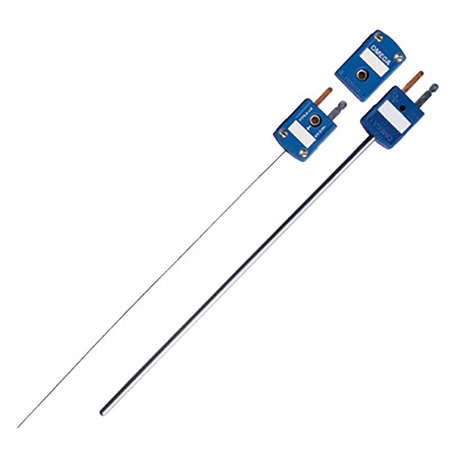1-800-663-4209 | Vos commentaires sont importants, répondez à un sondage rapide commentaires sur le site web

JMQSS
Thermocouples à Déconnexion Rapide Avec Connecteurs Miniatures.
Modèles en stock
- Longueurs 150mm et 300mm en Stock
- Diamètres de Gaine de 1 à 3mm.
Cliquez ici pour thermocouples de diamètres 0,25 à 0,75mm - Gaine: Acier Inox, Incone, SuperOMEGACLAD™XL
- Soudure Chaud: à la Masse, Isolée , Nue
- Terminaison par Connecteur Miniature
- Connecteur et serre câble inclus- gratuit
- Fabrication: Câble de tolérance de Classe1
- Corps de connecteur en Nylon verre-rempli, utilisable jusqu'à 220°C
- Sondes Testée- les sondes sont testée individuellement pour la pression et l'isolation
- Longueurs Personnalisées Disponibles
JMQSS
Depuis
C$
34.50
Modèles en stock
Vous ne trouvez pas le bon modèle ?
Utilisez notre configurateur personnalisé pour affiner votre produit
L'aperçu du produit
- Cable Clamp PCLM-SMP
- Connector Temperature, Min 0 °C
- Electrical Connection Miniature Male Thermocouple Connector
- Mating Connector Miniature Female Thermocouple Connector
- Process Connection Size N/A
- Process Temperature, Min 0 °C
- Safety Clip SMCL
- Temperature Sensor Type Thermocouple
Description
Les thermocouples déconnexion rapide OMEGA avec connecteurs miniatures sont de haute qualité au bon prix. Il dispose d'une jonction de transition moulée en nylon verre-rempli avec une utilisable jusqu'à 260°C. Ces sondes sont disponibles en diamètres de 0,25mm à 3,0mm. Cette page présente les sondes en diamètre de 1 à 3mm. Cliquez ce lien pour les sondes fines (0.25 à 0.75mm).
PDF et manuels
Afficher les notes et les avis